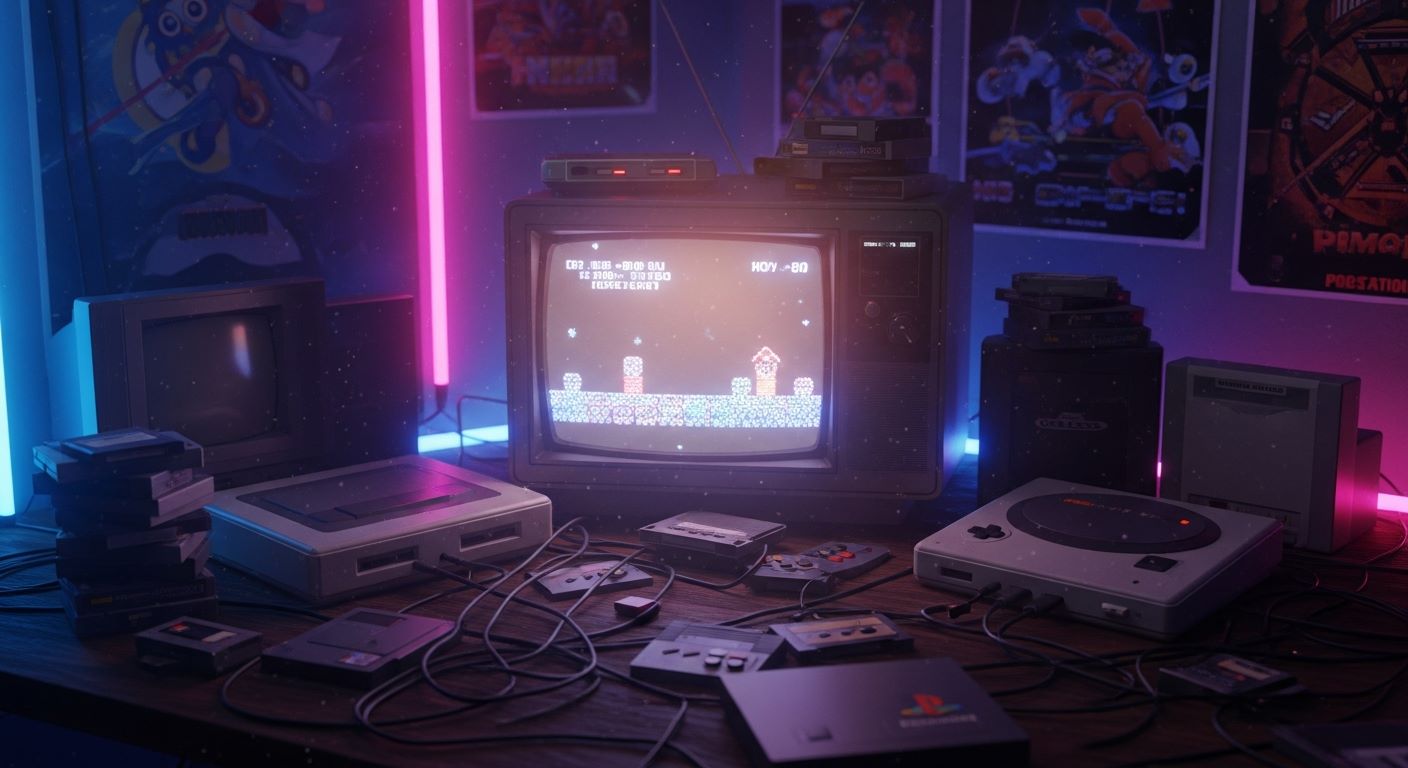Retro Gaming Renaissance: Why Classic Games Are Thriving in 2025
Retro gaming is experiencing an unprecedented renaissance in 2025, transforming from a niche hobby into a multi-billion-dollar industry . The global retro gaming console market reached $3.8 billion in 2025, with industry forecasts projecting growth to $8.5 billion by 2033—representing a remarkable 10% compound annual growth rate . This resurgence reflects fundamental shifts in consumer preferences, technological accessibility, and cultural appreciation for gaming history.
The Powerful Nostalgia Economy
Nostalgia marketing has proven exceptionally effective among millennials and Generation X consumers who experienced the golden age of arcade and home console gaming firsthand . These demographics, now in their prime earning years, actively seek experiences reconnecting them with formative childhood memories. The phenomenon extends beyond simple sentimentality:
- Emotional resonance: Classic games evoke powerful positive memories and associations
- Shared cultural experiences: Retro gaming creates cross-generational bonding opportunities
- Comfort in familiarity: Known gameplay patterns provide stress relief in uncertain times
- Authenticity appeal: Original hardware and software represent "real" gaming experiences
- Community belonging: Retro gaming culture fosters inclusive, passionate communities
Interestingly, younger demographics are discovering classic gaming titles for the first time, creating cross-generational market appeal that drives sustained growth . Social media platforms, particularly TikTok, have amplified this trend—in 2021, Snake game videos exploded in popularity, with content creators garnering millions of views .
Simple Yet Deeply Engaging Gameplay
In an era of hyper-realistic graphics, sprawling open worlds, and complex progression systems, retro games offer refreshingly straightforward experiences . Modern AAA titles often require dozens of hours to complete and extensive tutorials to understand—retro games deliver immediate gratification with intuitive mechanics.
Accessibility advantages of retro gaming:
- Pick-up-and-play design: No lengthy tutorials or complex control schemes
- Session flexibility: Complete gaming experiences in minutes rather than hours
- Universal comprehension: Visual language understood across cultures and ages
- Skill-based progression: Success through practice rather than time investment
- Creative constraints: Limited technology forced innovative gameplay solutions
The Java gaming era (2001-2010) exemplified this design philosophy perfectly . Games like Bounce, Snake, and Diamond Rush featured simple controls but delivered challenging, engaging experiences within tiny file sizes . These design principles influence modern indie games and mobile titles today.
Economic Accessibility and Value
Retro games and hardware offer exceptional value compared to contemporary gaming . While new console generations cost $400-500 and individual games reach $70, retro gaming provides extensive entertainment at fraction of the cost:
- Affordable hardware: Classic consoles available for $50-150
- Game value: Extensive libraries with titles costing $5-30
- Emulation access: Free software enabling game preservation and access
- Longevity: Decades-old systems still function with proper maintenance
- Collection building: Gradual library expansion without financial pressure
The retro video game market exceeded $500 million in 2025, driven by collector enthusiasm and market accessibility . Digital distribution platforms and emulation have lowered entry barriers significantly, democratizing access to gaming history.
Thriving Communities and Cultural Preservation
Vibrant communities sustain retro gaming through passionate engagement and content creation . These communities extend far beyond casual nostalgia, actively preserving gaming history through:
Community contributions:
- ROM preservation: Digital archiving preventing permanent game loss at Internet Archive
- Hardware restoration: Professional services repairing and upgrading classic consoles
- Modification culture: Custom firmware, translation patches, and gameplay enhancements
- Speedrunning competitions: Skilled players pushing games to absolute limits
- Educational content: YouTube channels and websites documenting gaming history
- Convention attendance: Events like RetroGameCon fostering in-person connections
Physical restoration services have emerged as significant market segments . Companies specializing in gaming hardware restoration report substantial growth, expanding operations through social media platforms and building communities around retro gaming culture.
For those interested in creating their own games inspired by classics, Game Dev Beginner offers comprehensive tutorials on fundamental development techniques . Unity provides modern game development tools accessible to beginners and professionals alike .
Market Growth and Industry Impact
The retro gaming industry demonstrates remarkable resilience and growth potential across multiple sectors .
Market segment performance:
- Console hardware sales: Classic systems and modern retro-inspired designs
- Physical game collecting: Cartridges, cases, and complete-in-box items
- Digital re-releases: Official ports and remasters for modern platforms
- Merchandise ecosystem: Apparel, accessories, and collectibles
- Media coverage: Documentary films, podcasts, and journalism dedicated to gaming history
The success of modern console launches creates halo effects benefiting retro gaming . The Nintendo Switch 2, which sold 3.5 million units globally in its first four days (June 2025), demonstrates continued vitality across all gaming segments . This cross-pollination between modern and retro markets contributes to overall ecosystem health.
The Future of Retro Gaming
Looking ahead, several trends will shape retro gaming's evolution :
- Enhanced preservation technology: Improved emulation accuracy and hardware longevity
- Hybrid experiences: Modern features integrated with classic gameplay
- Educational integration: Gaming history courses in academic institutions
- Investment potential: Rare games and sealed copies appreciating in value
- Streaming content: Live gameplay and commentary attracting massive audiences on Twitch
The retro gaming market exhibits strong potential with a projected CAGR exceeding 15% over the next decade . This growth depends on successful continuation of preservation efforts, community engagement, and continued innovation within the industry.
The renaissance of retro gaming represents more than nostalgia—it reflects enduring appreciation for exceptional game design, community-driven preservation, and accessible entertainment . As the industry continues evolving, classic games remain timeless reminders that creativity, not technology, defines memorable gaming experiences.

